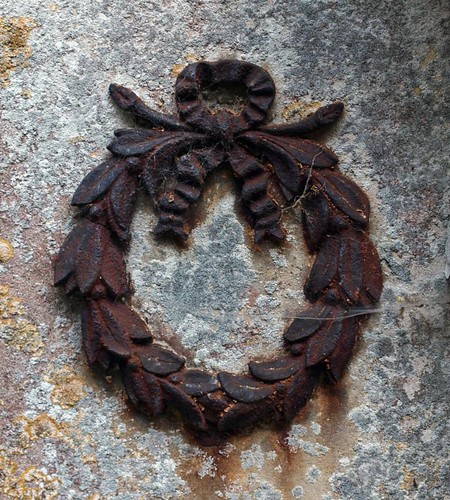ALL SAINTS. C18 W tower with weatherboarded upper stage and pyramid roof. Long aisleless nave of the C12 (N wall: one Norman window and traces of a second, besides a mid C16 brick window of three lights), and long, lower early C14 chancel. The chancel E window however is Early Perp - of four lights with panel tracery. The chancel arch also is late C14 in style. Inside the chancel a charming small N doorway with figures of angels in jambs and voussoirs. - FONT. Plain C12, of Purbeck marble, on five shafts.
GREAT OAKLEY. With a few houses 300 or 400 years old, it lies two miles west of Hamble Water, while the narrow church stands farther inland and is reached by an elm-lined valley road running by Ramsey Brook. Two sycamores guard the churchyard gate and oaks and chestnuts grow in profusion. A blocked Norman window above a 14th century doorway tells us how long a church has been here; the square font with 20 round-headed panels has been in use all through the church’s history. Up in the chancel is a doorway of 1500 now closed for ever, enriched with carvings of angels, crowns, and heads. The east window is filled with portraits of saints and angels, and strikes a delightful colour note seen through the pointed chancel arch.
Simon K -
I came down from the ridge, and after a couple of miles came to the village of Great Oakley, a handsome place with Georgian houses and a square, though spolied a little by being on the Harwich to Clacton main road. Beyond it, the road divides, and beyond woods on a bluff looking out over open countryside is the parish church.
Locked, though with a keyholder notice of sorts. The setting is stunningly lovely. The ground falls away rapidly immediately to the west of the weatherboarded tower, and the headstones below it have never been removed or reset by lawnmower enthusiasts. In short, it looks like an illustration from an 18th Century book of etchings of country churches. I almost expected to see a yokel in a smock smoking a clay pipe and sitting on a tree stump.
James Bettley in the revised Pevsner implies that the inside is nothing compared with the exterior, and the curious keyholder notice said anyone wishing to discuss matters concerning the Church should ring... it gave three numbers. I thought about ringing them in turn and posing a serious of abstruse puzzlers about heresies in the fifth century, but thought better of it and cycled on through increasingly narrow and lovely lanes through Moze to Beaumont.
Simon K -
I came down from the ridge, and after a couple of miles came to the village of Great Oakley, a handsome place with Georgian houses and a square, though spolied a little by being on the Harwich to Clacton main road. Beyond it, the road divides, and beyond woods on a bluff looking out over open countryside is the parish church.
Locked, though with a keyholder notice of sorts. The setting is stunningly lovely. The ground falls away rapidly immediately to the west of the weatherboarded tower, and the headstones below it have never been removed or reset by lawnmower enthusiasts. In short, it looks like an illustration from an 18th Century book of etchings of country churches. I almost expected to see a yokel in a smock smoking a clay pipe and sitting on a tree stump.
James Bettley in the revised Pevsner implies that the inside is nothing compared with the exterior, and the curious keyholder notice said anyone wishing to discuss matters concerning the Church should ring... it gave three numbers. I thought about ringing them in turn and posing a serious of abstruse puzzlers about heresies in the fifth century, but thought better of it and cycled on through increasingly narrow and lovely lanes through Moze to Beaumont.


No comments:
Post a Comment